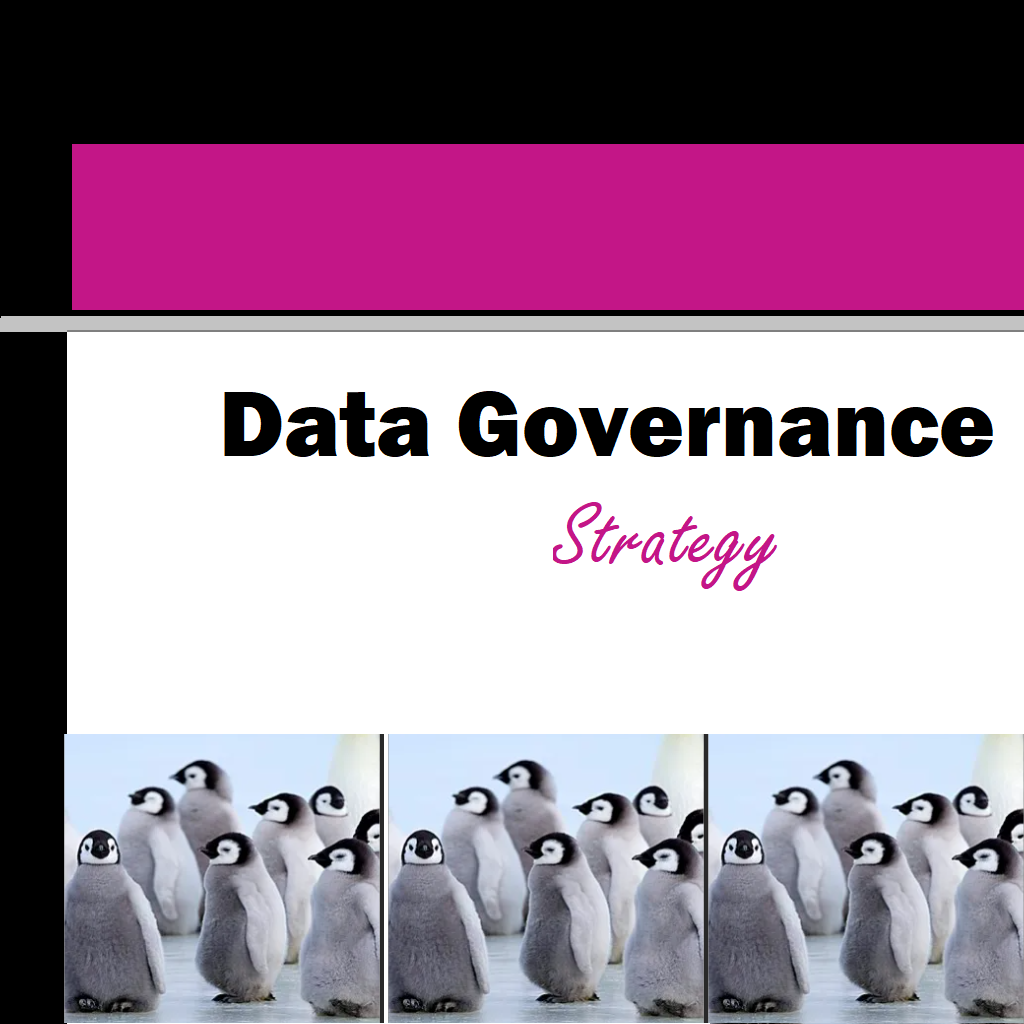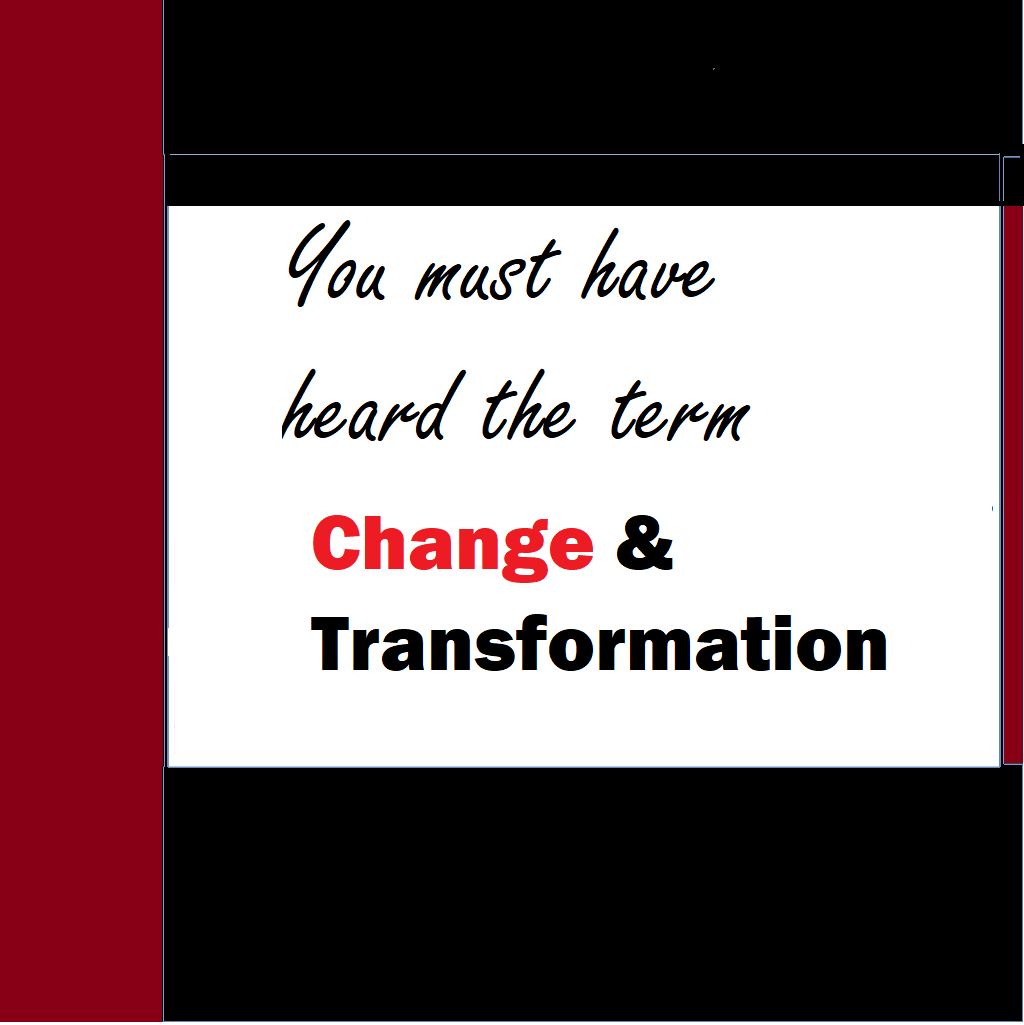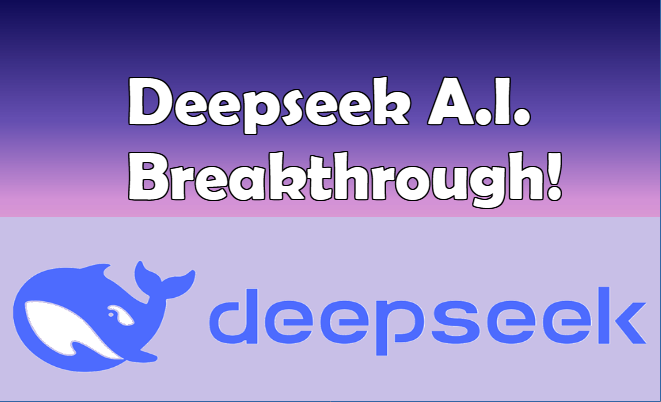We quickly cover what we saw in our previous article and then move to data governance in this article Governance is a critical factor that influences the success and sustainability of organizations and projects. By establishing transparent rules, efficient processes, and robust structures, governance provides a framework that promotes accountability, transparency, and responsible decision-making. Governance plays a pivotal role in helping organizations achieve their objectives by effectively managing resources, mitigating risks, and ensuring compliance with legal and ethical standards. It fosters a culture of trust and integrity, instilling confidence among stakeholders in the organization’s operations. Moreover, it facilitates the efficient use of resources, minimizes conflicts, and encourages collaboration among stakeholders. Ultimately, good governance enables organizations to adapt to changing circumstances, make informed decisions, and navigate challenges, thereby enhancing their overall resilience and long-term viability.
Governance encompasses the comprehensive system and framework of rules, policies, processes, and structures that guide and regulate the actions and behavior of individuals, groups, or organizations. It involves establishing mechanisms for decision-making, accountability, and control to ensure that activities are conducted responsibly, ethically, and effectively.
Governance can be applied across various contexts, including government entities, businesses, nonprofit organizations, and software projects. It provides a framework for managing resources, making decisions, resolving conflicts, and achieving objectives while upholding principles of transparency, fairness, and integrity. Governance serves as a fundamental framework for effective decision-making, accountability, and resource management in organizations and projects. By aligning governance with objectives, values, and stakeholder expectations, organizations can operate in a manner that ensures their success and meets the evolving needs of their stakeholders. Through continuous evaluation and improvement, governance practices can be refined to address challenges and support the achievement of desired outcomes.
CONTENTS
Important elements of data governance framework
Data governance best practices
Data governance tools open source
Data governance framework
A data governance framework refers to a collection of guidelines, policies, and procedures that organizations adopt to effectively manage, control, and safeguard their data assets. It establishes a structure for overseeing data throughout its lifecycle, from creation to disposal, and defines rules regarding data quality, security, privacy, and compliance.
Typically, a data governance framework consists of several key components:
- Data Governance Structure: This outlines the organizational setup responsible for governing data, including the roles and responsibilities of individuals such as data stewards, data owners, and data custodians. The structure clarifies who holds accountability for data-related decisions and actions within the organization.
- Data Policies and Standards: These are documented guidelines and regulations that govern how data should be handled and utilized within the organization. Data policies cover various aspects, including data quality, data classification, data security, data privacy, and compliance with relevant regulations.
- Data Management Processes: These processes provide a systematic approach to managing data throughout its lifecycle. They encompass activities such as data acquisition, storage, integration, transformation, archiving, retention, and disposal. Additionally, these processes address data quality assessment, data lineage tracking, and metadata management.
- Data Quality Management: This component focuses on ensuring the accuracy, completeness, consistency, and reliability of data. It involves establishing data quality metrics, conducting data profiling, implementing procedures for data cleansing and validation, and continuously monitoring data quality.
- Data Security and Privacy: Data governance frameworks address the protection of data assets against unauthorized access, breaches, and misuse. They define security controls, encryption mechanisms, access controls, authentication, and authorization procedures. They also incorporate privacy principles and ensure compliance with data protection regulations such as GDPR or CCPA.
- Data Compliance and Risk Management: These aspects involve aligning data practices with applicable laws, regulations, and industry standards. Data governance frameworks establish processes to ensure compliance with legal requirements, data retention policies, and restrictions on data usage. They also include risk management procedures to identify and mitigate potential risks associated with data handling.
- Data Governance Metrics and Monitoring: To assess the effectiveness of the data governance program, organizations define key performance indicators (KPIs) and metrics to measure compliance, data quality, security incidents, and other relevant factors. Regular monitoring and reporting help identify areas for improvement and ensure ongoing adherence to the framework.
In a nut-shell, a data governance framework provides a structured approach to managing data as a valuable asset, ensuring its integrity, usability, and security while aligning with organizational objectives and regulatory obligations.
Important elements of data governance framework
The key elements of a data governance framework include:
- Data Governance Structure: This element involves defining the organizational structure responsible for data governance, including roles, responsibilities, and reporting lines. It establishes positions such as data stewards, data owners, and data custodians.
- Data Policies and Standards: These are documented guidelines and rules that govern how data is managed within the organization. They cover areas such as data quality, data classification, data security, data privacy, data retention, and compliance with relevant regulations and industry best practices.
- Data Management Processes: This element encompasses the processes and procedures for managing data throughout its lifecycle. It includes activities such as data acquisition, storage, integration, transformation, cleansing, archiving, retention, and disposal. It also incorporates processes for data quality assessment, metadata management, and data lineage tracking.
- Data Quality Management: Ensuring data quality is a crucial aspect of data governance. This element involves defining data quality metrics, establishing rules and standards for data quality, performing data profiling, implementing data cleansing and validation procedures, and continuously monitoring data quality.
- Data Security and Privacy: Data governance frameworks address data protection against unauthorized access, breaches, and misuse. This element includes security controls, encryption mechanisms, access controls, authentication, and authorization processes. It also incorporates privacy principles and ensures compliance with data protection regulations and privacy laws.
- Data Compliance and Risk Management: This element focuses on aligning data practices with legal and regulatory requirements. It includes processes and controls to ensure compliance with data-related regulations, industry standards, and internal policies. It also involves risk management procedures to identify and mitigate potential risks associated with data governance.
- Data Governance Metrics and Monitoring: To assess the effectiveness of the data governance framework, organizations establish key performance indicators (KPIs) and metrics. These metrics measure data quality, compliance levels, security incidents, and other relevant factors. Regular monitoring and reporting help identify areas for improvement and ensure the continued effectiveness of the framework.
These elements collectively form the foundation of a data governance framework, providing the necessary structure, policies, processes, and controls to effectively manage and govern data assets within an organization.
Data governance policy
Setting up a data governance policy is a crucial step for organizations to establish a framework that ensures effective management, control, and protection of their data assets. The policy serves as a guiding document that outlines the organization’s commitment to data governance and sets forth the principles, objectives, and responsibilities associated with managing data.
- Defining Objectives: The first step in setting up a data governance policy is defining clear objectives. These objectives should align with the organization’s overall strategy and address specific needs such as data quality improvement, data security enhancement, regulatory compliance, or better decision-making based on reliable data.
- Identifying Stakeholders: It is essential to identify key stakeholders within the organization who will be responsible for data governance activities. This includes identifying data stewards, data owners, and data custodians who will oversee different aspects of data management and governance.
- Establishing Roles and Responsibilities: Clearly defining the roles and responsibilities of individuals involved in data governance is crucial. Data stewards should be assigned for different data domains or business areas to ensure accountability and ownership. Data owners should be responsible for data assets and decision-making, while data custodians focus on the technical aspects of data management.
- Developing Policies and Standards: The data governance policy should include specific policies and standards that outline how data should be handled throughout its lifecycle. These policies can cover areas such as data classification, data quality requirements, data privacy and security measures, data sharing and access controls, and compliance with relevant regulations.
- Establishing Processes and Procedures: Defining clear processes and procedures is essential for effective data governance. This includes processes for data acquisition, storage, integration, transformation, data quality assessment, metadata management, data access requests, data retention, and data disposal. These processes should be documented and communicated to relevant stakeholders.
- Ensuring Data Quality and Security: The data governance policy should emphasize the importance of data quality and security. It should outline measures to ensure data accuracy, completeness, consistency, and reliability. This includes data validation processes, data profiling, data cleansing activities, as well as security controls, access management, encryption, and data privacy measures.
- Monitoring, Reporting, and Continuous Improvement: The policy should establish mechanisms for monitoring and reporting on data governance activities. Key performance indicators (KPIs) and metrics should be defined to assess the effectiveness of data governance efforts. Regular audits, reviews, and feedback loops should be implemented to identify areas for improvement and ensure continuous enhancement of the data governance framework.
- Training and Communication: To ensure successful implementation of the data governance policy, adequate training and communication initiatives should be undertaken. This includes educating stakeholders on the policy, their roles, and responsibilities, as well as providing training on data management best practices, data privacy, and security awareness.
Setting up a data governance policy requires a holistic approach that considers organizational objectives, stakeholder involvement, clear policies and standards, well-defined processes, and a commitment to ongoing monitoring and improvement. It serves as a crucial foundation for effective data governance and promotes the responsible and secure management of data assets within the organization.
Data governance best practices
Data governance best practices are a set of guidelines and approaches that organizations can follow to establish and maintain an effective data governance program. These practices help ensure that data is managed in a consistent, reliable, and secure manner. Here are some key data governance best practices:
- Clear Data Governance Strategy: Develop a clear data governance strategy aligned with the organization’s goals and objectives. This strategy should outline the purpose, scope, and desired outcomes of the data governance program, and provide a roadmap for implementation.
- Executive Sponsorship: Obtain executive sponsorship and support to drive data governance initiatives. Senior leadership buy-in is crucial for securing necessary resources, establishing accountability, and fostering a culture of data governance throughout the organization.
- Establish Data Governance Roles and Responsibilities: Clearly define roles and responsibilities for data governance activities. Identify data stewards, data owners, and data custodians who will be accountable for data management, quality, security, and compliance. Ensure that these roles are well understood and documented.
- Data Governance Framework: Develop a comprehensive data governance framework that includes policies, standards, and guidelines. This framework should address key areas such as data classification, data quality, data security, data privacy, data lifecycle management, and regulatory compliance.
- Data Quality Management: Implement processes and controls to maintain data quality. This includes data profiling, data cleansing, data validation, and establishing data quality metrics. Regularly monitor and measure data quality, and take corrective actions to address issues and improve data accuracy and reliability.
- Data Security and Privacy: Implement robust data security measures to protect sensitive information. This includes access controls, encryption, data masking, and monitoring for unauthorized access or data breaches. Ensure compliance with relevant data protection regulations and privacy laws.
- Metadata Management: Establish metadata management practices to capture and maintain essential information about data assets. Metadata helps in understanding data lineage, data definitions, and relationships, enabling better data discovery and decision-making.
- Data Governance Communication and Training: Develop a communication plan to raise awareness about data governance across the organization. Conduct training programs to educate employees about data governance principles, policies, and procedures. Promote a data-driven culture and encourage collaboration and cooperation among stakeholders.
- Ongoing Monitoring and Measurement: Regularly monitor and measure the effectiveness of data governance processes and controls. Establish key performance indicators (KPIs) to track progress and identify areas for improvement. Conduct periodic audits and reviews to ensure compliance and address any emerging issues.
- Continuous Improvement: Data governance is an ongoing process that requires continuous improvement. Regularly evaluate and update the data governance framework based on feedback, lessons learned, and evolving business and regulatory requirements. Encourage feedback and participation from stakeholders to drive continuous improvement efforts.
By following these data governance best practices, organizations can establish a solid foundation for managing their data assets effectively. This helps ensure data integrity, accessibility, security, and compliance, ultimately enabling better decision-making and maximizing the value derived from data.
Data governance tools open source
There are several open-source data governance tools available that can help organizations establish and manage their data governance initiatives. Here are some popular open-source data governance tools:
- Apache Atlas: Apache Atlas is a scalable and extensible open-source data governance and metadata framework. It provides capabilities for data classification, lineage tracking, metadata management, and policy enforcement. Atlas integrates with various components of the Apache Hadoop ecosystem and supports integration with external systems.
- Collibra Data Governance Center Community Edition: Collibra offers a Community Edition of its Data Governance Center, providing open-source data governance capabilities. It allows organizations to define and manage data policies, data catalogs, business glossaries, and data lineage. The Community Edition provides a limited feature set compared to the enterprise version but is a good starting point for small to medium-sized organizations.
- Metacat: Metacat is an open-source metadata management and data catalog tool developed by Netflix. It provides features for managing data metadata, including data discovery, versioning, and lineage. Metacat is designed to integrate with existing data platforms and can be customized to fit specific requirements.
- Open Metadata and Governance (OMAG) Project: OMAG is an open-source initiative that aims to provide a comprehensive set of tools and services for metadata and governance. It includes components such as the Open Metadata Repository, Open Lineage Services, and Open Discovery Services. OMAG is designed to enable interoperability between different metadata repositories and data governance tools.
- Apache Ranger: Apache Ranger is an open-source security and access management framework that includes features for data governance. It provides centralized authorization and policy management for various data platforms, including Hadoop, Kafka, and Hive. Ranger allows organizations to define and enforce fine-grained access controls and audit data access activities.
- DataHub: DataHub is an open-source metadata catalog developed by LinkedIn. It provides capabilities for metadata management, data discovery, and data lineage tracking. DataHub integrates with various data platforms and tools and allows organizations to create a centralized catalog of data assets.
It’s worth noting that while these tools are open source and freely available, they may require technical expertise and resources for deployment, configuration, and maintenance. Organizations should carefully evaluate the features, community support, and compatibility with their existing data infrastructure before selecting a specific open-source data governance tool.
Data governance – example
Consider a multinational company that operates globally and handles significant volumes of customer data. To establish effective data governance practices, the company implements a comprehensive data governance program.
As part of their data governance initiative, the company defines clear roles and responsibilities. They appoint data stewards for various business units and data domains, assigning them the responsibility of ensuring data quality, compliance, and security within their respective areas.
The company develops a data governance framework that includes policies and standards. They establish guidelines for data classification, outlining how sensitive customer information should be handled and protected. Data quality standards are defined, and processes for regular data validation and cleansing are implemented.
To enforce data security, the company deploys access controls and encryption mechanisms. They establish policies and procedures for data privacy, adhering to relevant regulations such as GDPR or CCPA. Regular audits are conducted to ensure compliance with both external regulations and internal data governance policies.
Metadata management is a crucial aspect of their data governance program. The company implements a metadata repository that captures information about data assets, including data definitions, relationships, and lineage. This repository facilitates data transparency, aids in data discovery, and supports informed decision-making processes.
Furthermore, the company leverages data governance tools and technologies to support their program. They utilize an open-source data governance tool that offers capabilities for metadata management, data cataloging, and data lineage tracking. This tool allows centralized management and access to data governance assets.
To foster a culture of data governance, the company conducts regular training sessions and communication campaigns. They educate employees on the significance of data governance, clarify roles and responsibilities, and highlight the benefits of adhering to data governance practices. These efforts raise awareness and encourage active participation in data governance initiatives.
Through their data governance program, the company ensures the accurate maintenance, secure protection, and compliant usage of customer data. By minimizing the risk of data breaches, improving data quality, and enhancing decision-making processes based on reliable data, they foster trust and maintain compliance with data regulations.
This example showcases how an organization can establish and implement a data governance program to effectively manage and govern their data assets, safeguard customer information, and ensure adherence to data regulations.






It’s a pity you don’t have a donate button! I’d definitely donate to this superb blog! I suppose for now i’ll settle for book-marking and adding your RSS feed to my Google account. I look forward to fresh updates and will talk about this site with my Facebook group. Talk soon!
Hey Excellent work putting this together! I question what AI will do in this area over the next five years.